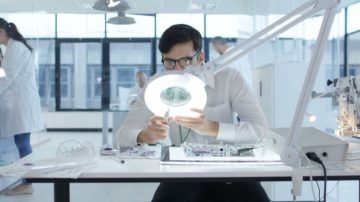UV-C lighting presents minimum risk when used in the correct way. Direct exposure to UV-C is dangerous. The lighting must always be installed with adequate shields and safeguards (such as presence detection sensors or timers) to avoid light damage and severe injuries to the eyes and skin. The UV-C disinfection luminaires we provide without such safeguards are intended only to be used as components in disinfection systems that contain any safeguards indicated, but not limited to, those specified in mounting instructions and user manuals.
Philips UV-C disinfection luminaires must only be sold by Signify or through qualified partners and installed by qualified professionals according to our stringent safety and legal requirements.
None of our UV-C lamps are certified or approved as a medical device anywhere in the world and should not be used as such. They should never be used in applications or activities that may cause and/or lead to death, personal injury and/or damage to the environment. Plants and/or materials that are exposed to higher dosages of UV-C may become damaged and/or discolored.









